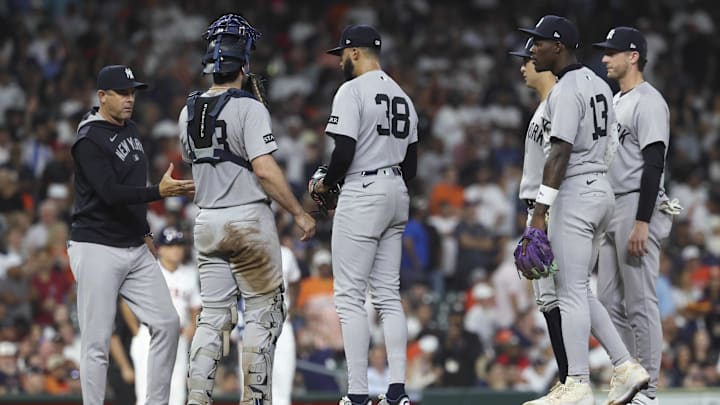In the annual flurry of offseason predictions, The Athletic recently published its comprehensive list of top free agents and their most likely landing spots. The usual suspects were all there, with big names linked to the Dodgers, Yankees, and other high-payroll clubs. The New York Mets, entering a pivotal offseason, were mentioned in connection with several players as they look to build on a competitive 2025 campaign. But as the dust settles, one name was conspicuously absent from their list of potential Mets targets, a name that should be circled in red on David Stearns’ whiteboard.
That name is Devin Williams. Yes, the same Devin Williams who just completed a disastrous-looking season in the Bronx after a mid-season trade to the Yankees. The closer is hitting free agency at the lowest point of his career, coming off a season where he posted a negative WAR and seemed to lose the "Airbender" magic that once made him the most dominant reliever in baseball. It’s precisely this down year, however, that makes him the single most intriguing high-risk, high-reward target on the market—and a perfect fit for the Mets.
The case for a Queens reunion
On the surface, Williams’ 2025 numbers look toxic. A 4.79 ERA is not what you expect from a premium closer. But this is where savvy front offices, like the one Stearns has built, earn their keep. A quick look at Williams' Statcast page reveals a massive discrepancy between his actual and expected performance. His bloated ERA was paired with an elite 3.04 xERA, suggesting he was the victim of terrible luck, poor defense, or a combination of both. His .271 wOBA was solid, but his .280 xwOBA indicates his underlying performance was even stronger.
The core skills are clearly still intact. Williams maintained a dominant 34.7% strikeout rate, and his command was solid, with a low 9.7% walk rate. He also continued to limit authoritative contact, posting a strong 35.7% Hard Hit%. In short, he was still missing bats and pounding the zone while avoiding barrels. These are not the peripherals of a pitcher who is "finished." So, what went wrong?
A deeper dive into his advanced metrics pinpoints the exact problem, and it wasn't his stuff. According to Fangraphs, Williams’ overall Stuff+ remained elite at 114, and his overall Location+ was a perfectly solid 101. The issue was a baffling collapse in his fastball command. While his legendary changeup was as good as ever—posting a 125 Stuff+ and a great 109 Location+—his fastball command completely abandoned him, registering a well-below-average 93 Location+.
This single failure had a cascading effect. With no ability to reliably locate his fastball, Williams was forced to lean even more heavily on his changeup than he did in 2024. Hitters, able to all but ignore the fastball, could sit on the "Airbender." It was still good enough to get elite results (as his xERA shows), but it was no longer an unhittable mystery. The problem wasn't the pitcher; it was the execution of a single, crucial secondary weapon.
If there is one executive in baseball who knows how to fix this, it’s David Stearns. Stearns was at the helm in Milwaukee when Williams was drafted and developed into a superstar. He understands the mechanics and mindset that make Williams dominant. The Mets need bullpen help, especially with setup man Ryan Helsley hitting free agency. Williams could slot into that 8th-inning role, or he could serve as the ultimate contingency plan should Edwin Diaz depart via his opt-out. A healthy, fixed Devin Williams paired with Diaz would give the Mets a 1-2 punch in the 8th and 9th innings that would be the envy of all of baseball.
